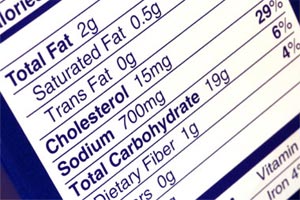Home >
Heart Health and Stroke >
Stroke: Know your risk

Stroke risk factors you can control
You can control the following risk factors by making lifestyle changes. Your doctor might also suggest medicine to help control some risk factors, such as high blood pressure or high cholesterol.
High blood pressure
High blood pressure is the biggest risk factor for stroke. It makes you four to six times more likely to have a stroke.
Return to top
Heart disease
The second biggest risk factor for stroke is heart disease, especially a condition called atrial fibrillation (fib-ruh-LAY-shuhn). In atrial fibrillation, the top chambers of the heart beat faster than the rest of the heart. The top chambers also beat more irregularly. This means that the blood doesn't flow through the heart correctly. This can cause clotting. The clots may come loose and travel to the brain, causing a stroke.
Return to top
Blood cholesterol levels
High LDL (bad) cholesterol levels and low HDL (good) cholesterol can cause plaque buildup in your arteries. This can increase your risk of stroke.
Return to top
Cigarette smoking
Cigarette smoking has also been linked to plaque buildup in the carotid artery (a major artery that leads to your brain). Smoking increases your stroke risk in several other ways. The nicotine in cigarettes can raise your blood pressure. Carbon monoxide from smoking reduces the amount of oxygen your blood carries to your brain. Finally, cigarette smoking can actually make your blood thicker and more likely to clot.
Return to top
Obesity
Postmenopausal women with a high blood triglyceride level and a waist size larger than 35 inches are five times more likely to have a stroke than other women.
Return to top
Diabetes
Diabetes is a disease in which blood glucose (sugar) levels are too high. Uncontrolled diabetes damages blood vessels throughout the body and in the brain. Because of this damage, having diabetes triples your risk of stroke.
Return to top
Heavy alcohol use, illegal drug use
For women, more than one alcoholic drink a day raises stroke risk. Cocaine use is a common cause of stroke in young people. Long-term marijuana smoking may also be a risk factor for stroke.
Return to top
Pregnancy
Rarely, pregnancy can cause stroke, especially in the first few months after delivery. Pregnancy increases blood pressure, and clots are more easily formed.
Return to top
Birth control pills or patch
Birth control pills and patches are usually safe for young, healthy women. But women on birth control pills who smoke or have migraines with aura (visual disturbances) have an increased risk of stroke. Women on the patch who smoke also have an increased risk. Researchers still don't know whether migraines increase stroke risk for women on the patch.
Return to top
Menopausal hormone therapy
Hormone therapy used to treat menopausal symptoms and prevent osteoporosis can increase stroke risk. If you use menopausal hormone therapy, take the lowest dose for the shortest time. Your doctor can talk more about the benefits and possible risks of menopausal hormone therapy.
Return to top
More information on Stroke risk factors you can control
Read more from womenshealth.gov
Explore other publications and websites
-
A Healthier You: My Shopping List - You can print this shopping list and bring it to the supermarket for ideas on healthy basics to stock your kitchen.
http://www.health.gov/dietaryguidelines/dga2005/healthieryou/html/shopping_list.html
-
Alcohol and Cardiovascular Disease (Copyright © American Heart Association) - This publication discusses the potential risks of developing heart and cardiovascular disease from drinking too much alcohol.
http://www.heart.org/HEARTORG/Conditions/Alcohol-and-Cardiovascular-Disease_UCM_305173_Article.jsp
-
Brain Basics: Preventing Stroke - This brochure provides information on stroke prevention. It includes stroke warning signs, an explanation of risk factors, and a description of treatable risk factors.
http://www.ninds.nih.gov/disorders/stroke/preventing_stroke.htm
-
ChooseMyPlate.gov - This interactive site is based on the 2010 Dietary Guidelines for Americans and gives information on how much of each food group you should eat each day. It also includes tips and resources for planning a well-balanced and healthy diet.
http://www.choosemyplate.gov/
-
Don't Wait for It to Happen to You: Reducing Your Risk of Stroke (Copyright © American Heart Association) - This booklet provides information on working with your doctor to reduce your chance of stroke before it is too late. It addresses risk assessment, lifestyle changes you can make, and what to do when you have symptoms of stroke.
http://www.acponline.org/patients_families/pdfs/health/stroke.pdf
-
Facts About Menopausal Hormone Therapy - This brochure summarizes the risks and benefits of menopausal hormone therapy. It is designed to provide patients with information to help them communicate more effectively with their doctor or nurse and determine the best course of treatment on an individual basis.
http://www.nhlbi.nih.gov/health/women/pht_facts.pdf
-
Physical Activity for Everyone: Adding Physical Activity to Your Life - There are plenty of ways to get the physical activity you need. this fact sheet has a few activity suggestions to get on track and stick with it.
http://www.cdc.gov/physicalactivity/everyone/getactive/index.html
-
Quit Guide - This online resource is designed to help you at any stage of the quitting process, whether you’re still thinking about quitting, have made the decision to quit, or have already taken steps to quit and just need help maintaining a smoke-free lifestyle. Both ex-smokers and experts have contributed to this guide.
http://www.smokefree.gov/quit-guide.aspx
-
Smoking and Tobacco Use - This website has extensive information on smoking and other types of tobacco use. It includes educational materials, reports, and information on how to quit.
http://www.cdc.gov/tobacco/
-
Stroke Risk Factors (Copyright © American Heart Association) - This fact sheet describes the risk factors for stroke. It describes which risk factors can be changed and which ones cannot.
http://www.strokeassociation.org/STROKEORG/AboutStroke/UnderstandingRisk/Understanding-Risk_UCM_308539_SubHomePage.jsp
-
Your Guide to Lowering High Blood Pressure - This website has an interactive guide that answers common questions about high blood pressure and offers tips and quizzes. It also provides information on medications and suggestions on how to talk to your doctor.
http://www.nhlbi.nih.gov/hbp/index.html
Connect with other organizations
Content last updated February 01, 2009.
Resources last updated February 01, 2009.
Return to top


